Table of Contents
- What is the uptime of a website?
- Why You Want a High Uptime
- How to Measure the Uptime of Your Website
- Best Uptime Monitoring Tools in 2025
- How to Choose the Best Website Monitoring Tools for Your Business
What is the uptime of a website?
Your uptime refers to the percentage of time your website is accessible to users and running without interruptions. A website’s uptime is calculated by comparing the amount of time the site runs without any technical difficulties to when there’s downtime.
100% uptime means your website has been up and running all day and all night without interruptions. On the other hand, if your website experiences a 10-minute outage during an 8-hour period, then it would have 99.6% uptime. Get it?
Why You Want a High Uptime
A high uptime shows you can keep a website continuously up and running. This is especially beneficial for pages that customers frequently visit, like an ecommerce store or an online service platform. Here are some top benefits of having a high uptime for your website.
1. You’ll improve the user experience.
I want to be confident that I can access a website anytime I input the URL into my browser. Anything short of that ruins my experience, and I’m sure you feel the same way. When users consistently encounter downtime on your website, they’ll soon begin avoiding you entirely.
2. Your uptime helps with SEO.
Search engines monitor your website’s uptime as they index your site and rank its content. If they come across frequent downtimes, search engines could reduce the ranking of your website on SERPs. That takes away from the organic traffic you are trying to gain.
3. You’ll maintain reliability.
Regular uptime monitoring helps your website become more resilient against server failures, unexpected traffic surges, and even cyberattacks. The more reliable your website, the better customer experience you can provide. Reliability also strengthens customer trust in your brand and leads to higher conversion rates.
In addition, you’ll have more support for marketing campaigns, product launches, and peak traffic periods.
4. You’ll save time.
With alert notifications, you can monitor website performance in real time and identify issues that arise. These alerts help you save time. You’ll be able to resolve flagged issues quickly. Your site doesn’t necessarily need to go down for you to reap the benefits of robust monitoring.
5. You’ll save money.
To extend the health metaphor, catching health problems early has helped me save a ton of money that I’d have otherwise spent on expensive medical treatments or more drugs. Similarly, maintaining high uptime and monitoring for issues can prevent costly recoveries from downtime or outages.
How to Measure the Uptime of Your Website
1. Sign up for a website monitoring service.
Uptime monitoring tools check your website 24/7, providing detailed reports on performance levels and uptimes. The data from these tools can help you make any necessary adjustments to ensure your website is always up and running.
2. Configure monitoring settings.
After signing up, you need to configure your settings. Enter the URL of the website you want to monitor and set the frequency of checks. You may also configure the type of checks you want to perform, such as HTTP, HTTPS, and more.
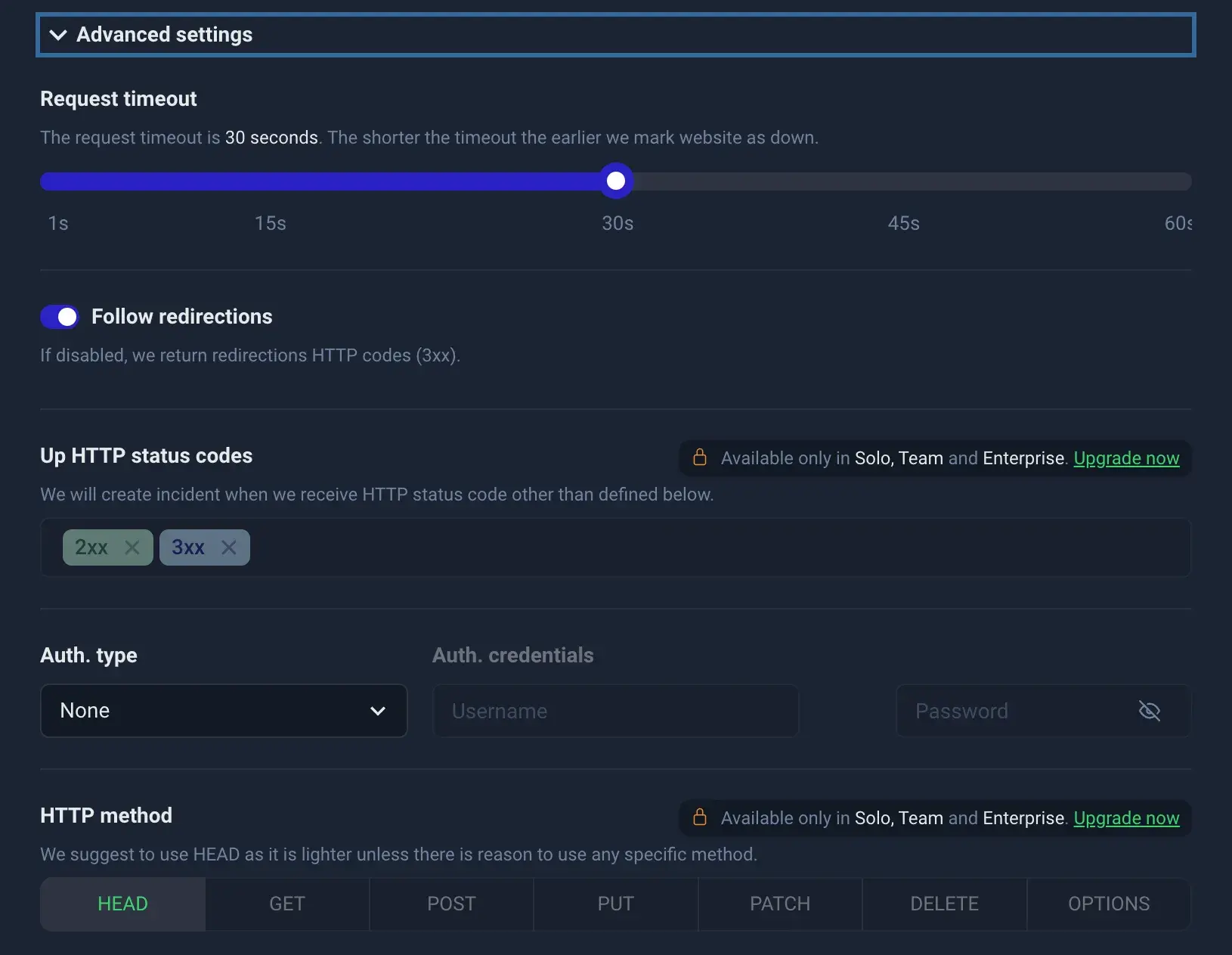
3. Set up alerts.
Your monitoring tool should provide real-time notifications of website downtimes. You can then monitor website performance and take corrective action quickly. Set up alerts based on your preferences, such as email, SMS, and push notifications.
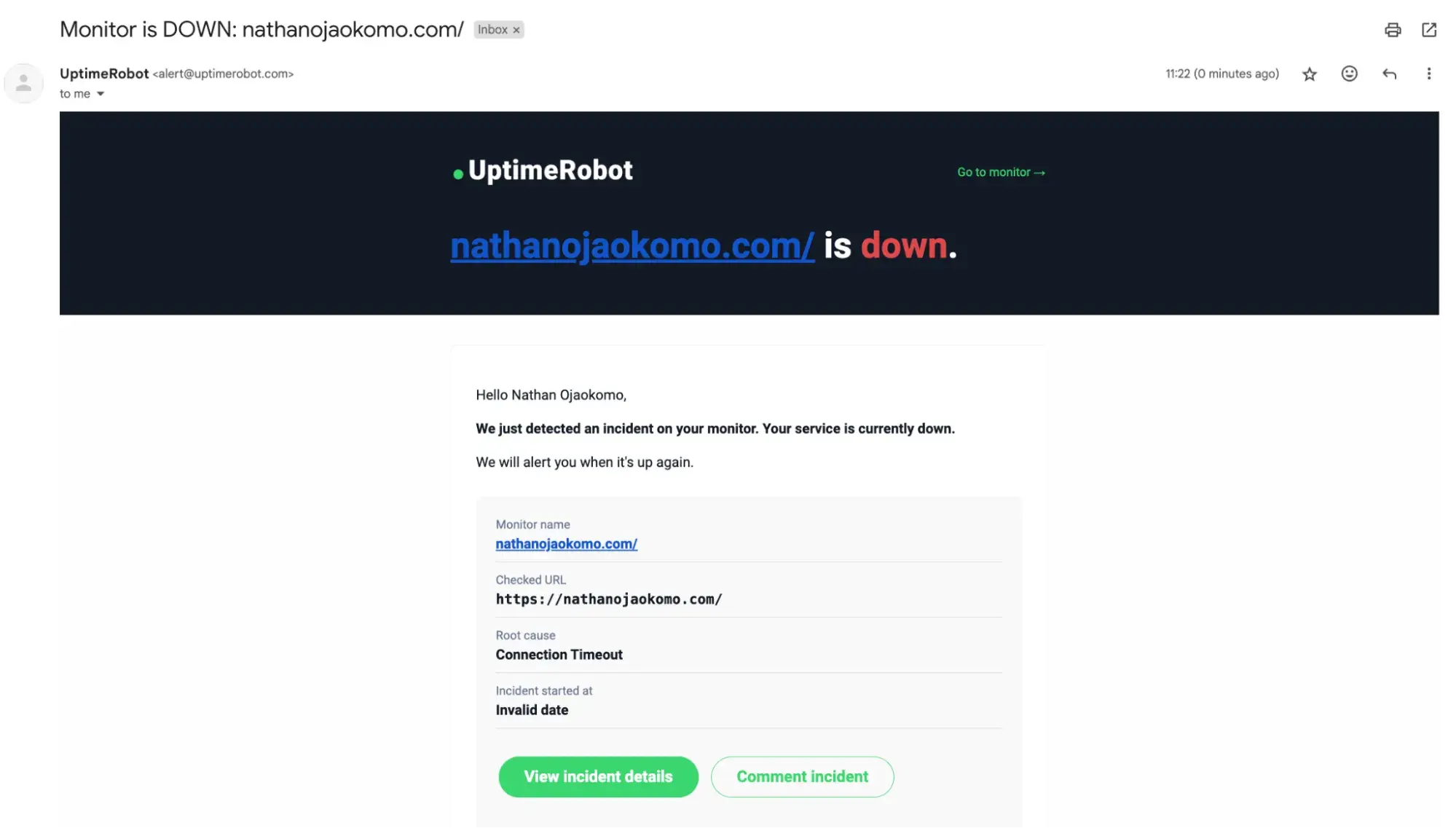
4. Start monitoring.
Once you have completed the configuration, start monitoring the website. Most website monitoring services provide a dashboard showing uptimes and response times.
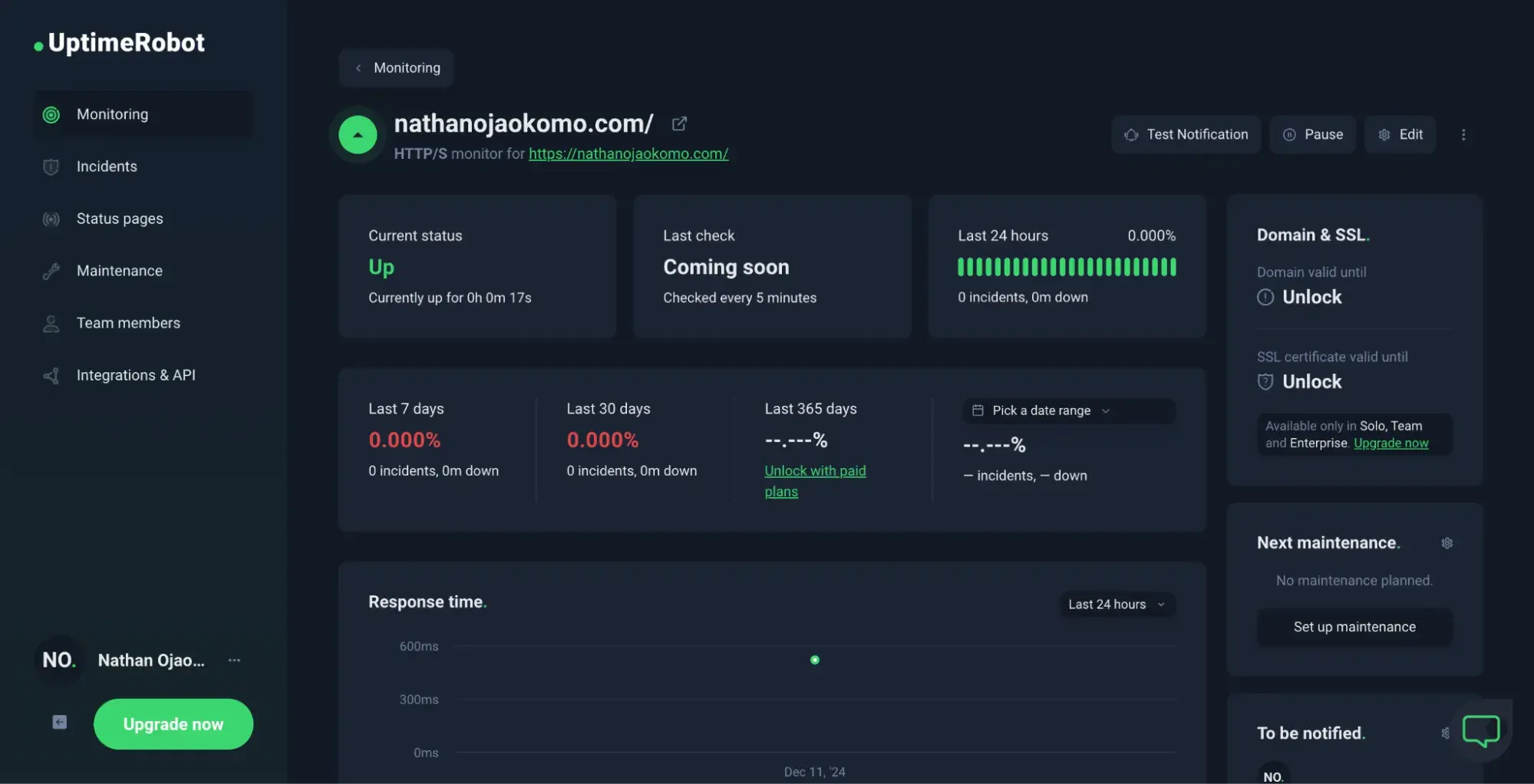
However, monitoring a website's uptime is not enough. You should also analyze reports to determine the root cause of downtime. Review these reports regularly and take necessary actions to avoid downtime in the future.
Best Uptime Monitoring Tools in 2025
Monitoring your website’s uptime is essential for ensuring a great user experience. These are the best tools to monitor your website’s uptime and general real-time performance.
1. Uptrends
Best for: Enterprises that need solutions to all their website performance monitoring in one place.
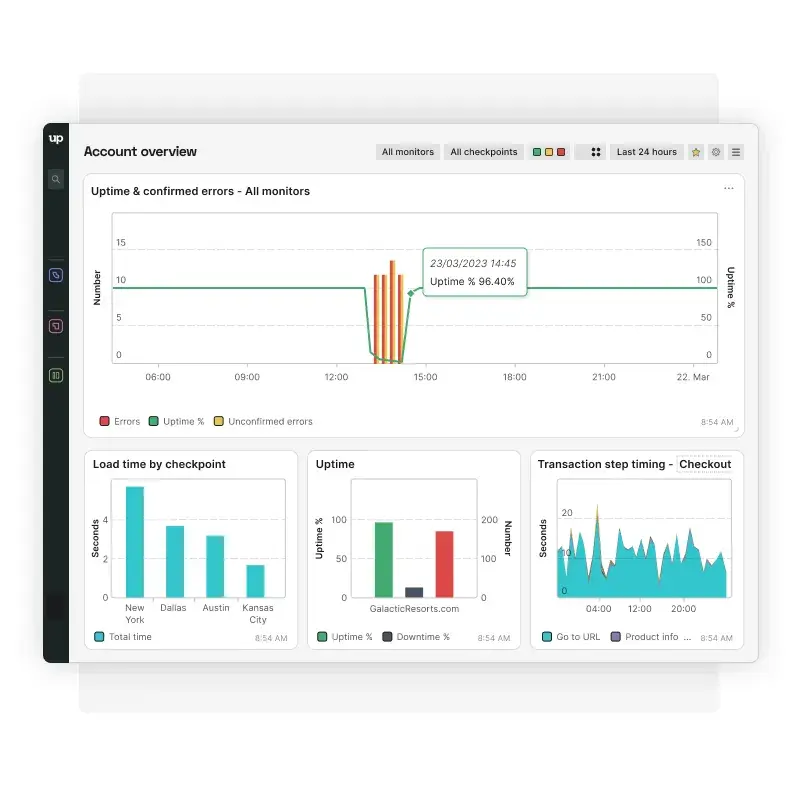
Uptrends incorporates real browser monitoring technology, making it possible to watch website performance from the end user's perspective. However, I liked that Uptrends does more than just checking my site’s uptime. This tool also monitors the elements that slow down my site. Identifying and correcting these issues can help me improve my SEO.
Core features include:
- Simultaneous website monitoring across multiple browsers, such as Chrome, Firefox, and Internet Explorer.
- Root cause analysis that allows you to identify the cause of website downtime.
- High coverage with around 233 checkpoints.
What I like: Uptrends' public status pages allow you to communicate website status to your users. I can use these status pages to inform users when my website will be backed up, so they can plan their visits accordingly.
2. StatusCake
Best for: Small to medium-sized companies that need reliable website monitoring with real-time notifications.
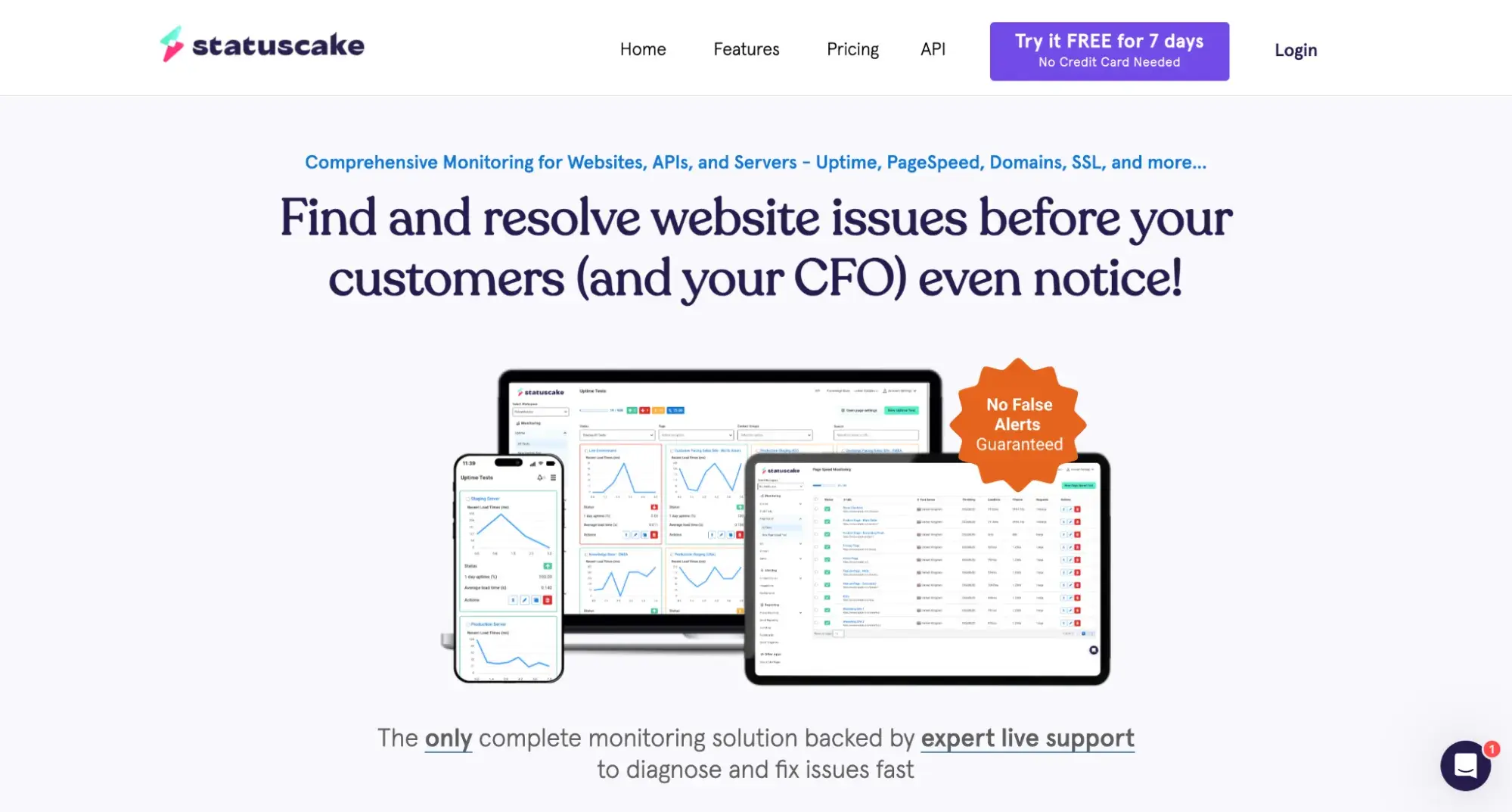
StatusCake provides detailed reports and real-time notifications of website downtimes. It also allows you to monitor uptime from over 40 locations, see response time data, and take corrective action if necessary.
When researching this company I was impressed to see that their client roster included big brands — Netflix, GoDaddy, Microsoft, and FanDuel were all proudly displayed on the site. I also loved that there was a free plan that works well for most starter websites.
From there, I could put in my site, choose what test I wanted to run, and set the frequency intervals. If anything went wrong, the site would alert me. Beyond, I could check my page speed, which lets me know how long my pages take to load and how big those files are.
Core features include:
- A global network of over 100 monitoring locations in more than 45 countries.
- SSL certificate monitoring. This feature detects any issues with SSL certificates and alerts you before they become invalid.
What I like: I like how thoroughly you can set your monitoring conditions. You can choose where to test from, the codes you’re testing for, and groups for your tests. The customizable alarm threshold ensures that you’re not overwhelmed by constant alerts.
3. Pingdom
Best for: Website owners and organizations that are particular about user experience.
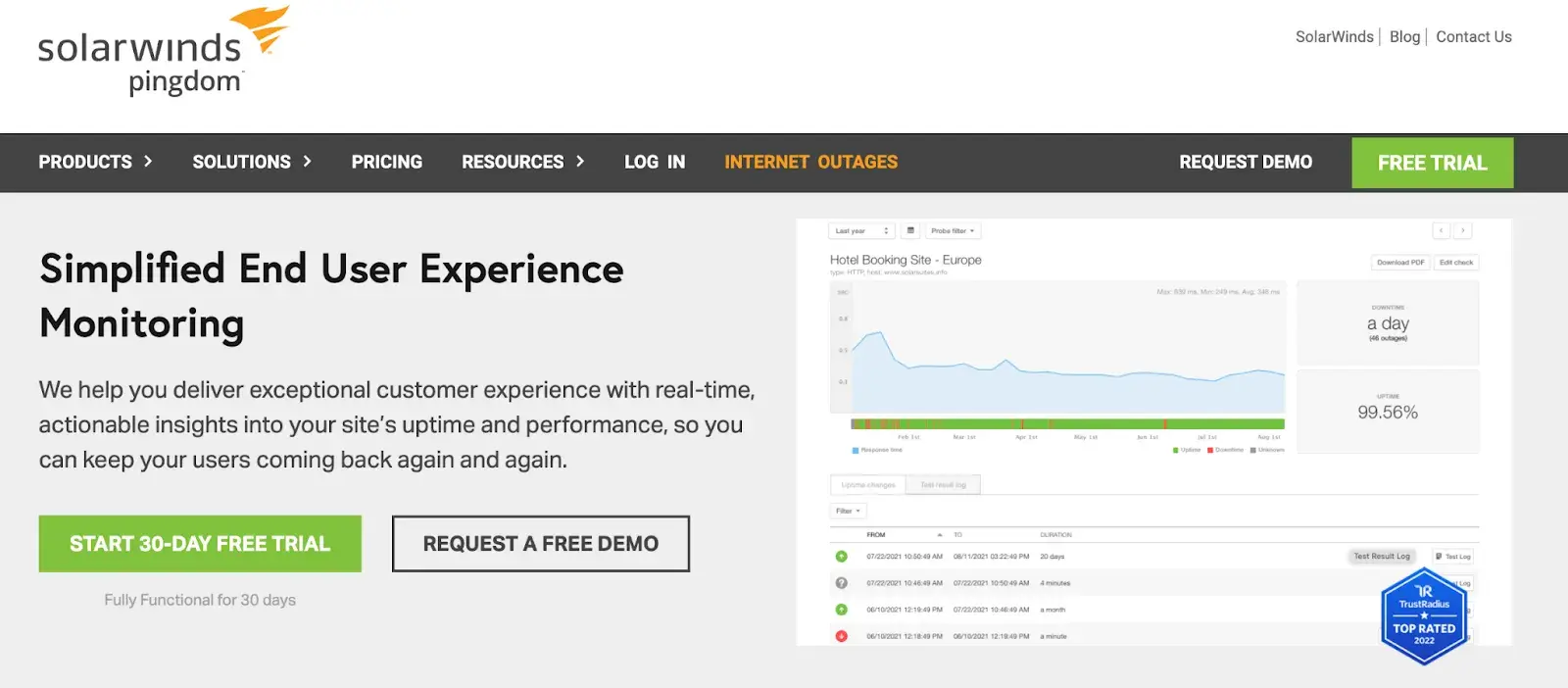
When researching Pingdom, I was most impressed by the tool’s intuitive dashboard. I can quickly see who’s on my site. More importantly, I can see where in the world my users are located, what their browsers are, and how their experience is on site. If my Firefox users are having trouble, I’ll know.
If I encounter an outage, I can get a root cause analysis report. That includes HTTP status codes, trace routes, and request outages. All of this information empowers me to solve the problem.
While I’m a one-person operation, Pingdom has a nifty tool that lets users select who gets alerted during an outage. That makes sure only people who can help are alerted of the fire.
Core features include:
- There are multiple check types, such as HTTP, DNS, TCP, UDP, SMTP, and IMAP, that allow you to get a more in-depth view of your website's uptime.
- Real user monitoring so that you can monitor website performance from the perspective of your users.
- Advanced reporting that enables you to analyze website uptime and performance trends.
What I like: This tool is easy to set up and manage, so even people with basic tech experience can navigate Pingdom. I also like how it pinpoints the causes of issues so you can resolve them immediately.
4. UptimeRobot
Best for: Startups, small businesses, or individual website owners who want a reliable tool without breaking the bank.
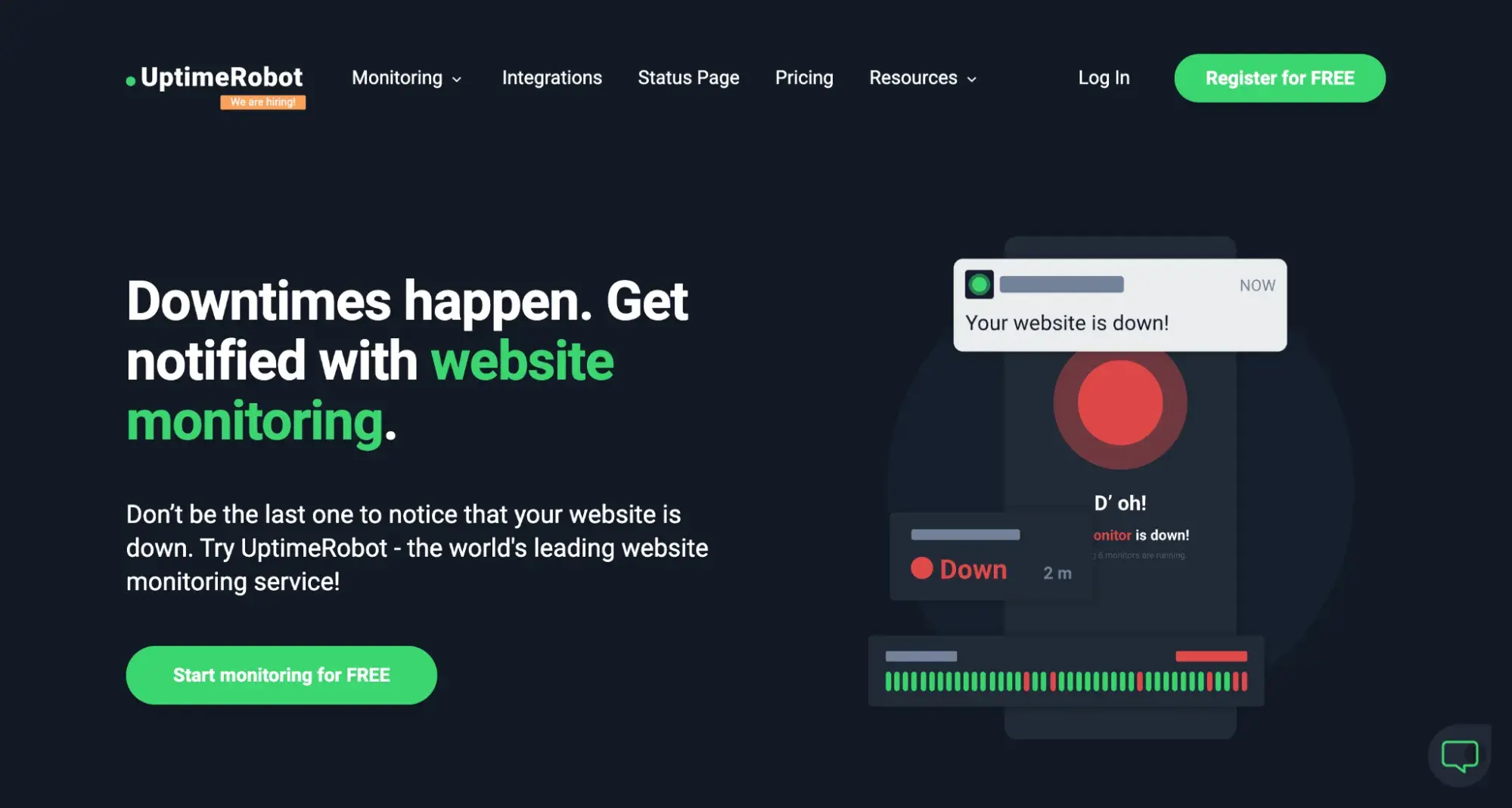
UptimeRobot is a popular, user-friendly monitoring service. Small to medium-sized businesses often use the platform's free option. In fact, UptimeRobot allows free users to create up to 50 uptime monitors. That’s more than enough for a freelance business owner like me.
I’m a monitor guy with multiple tabs open on more than one screen. Because of that, I love UptimeRobot’s TV mode. This view creates a single page that has the number of monitors up, their uptimes, and any monitors that are down. The page automatically refreshes every 60 seconds to catch outages at a glance. But don’t worry. You’ll still get push notifications.
UptimeRobot integrates with enterprise-level solutions, such as Slack, Zapier, PagerDuty, VictorOps, and OpsGenie, to ensure you get alerts promptly.
Core features include:
- Customizable alerts set to user preferences. You can choose notification frequency, alert contacts, and downtime window schedules.
- SSL monitoring that helps you identify potential certificate issues.
- API access, which enables you to integrate with other applications.
What I like: UptimeRobot makes it easy for someone who’s trying a website monitoring tool for the first time to quickly set alerts. The straightforward dashboard allows me to see my site at a glance, so I don’t miss anything.
5. Middleware
Best for: Startups to mid-sized teams needing affordable, all-in-one observability without complexity.

Middleware is a modern observability platform that combines API, infrastructure, and application monitoring in one intuitive interface. Unlike enterprise-heavy tools, it’s built for teams that want real-time insights without drowning in dashboards or unpredictable costs.
While tools like Datadog offer extensive integrations (at a premium) and LogicMonitor focus on AI-driven enterprise reporting, Middleware strikes a balance: powerful enough for technical teams and simple enough for lean operations.
Core features include:
- API monitoring: Track latency, errors, and request volumes with smart alerts.
- Lightweight infrastructure checks: Monitor servers, cloud services, and Kubernetes without overhead.
- Seamless integrations: Slack, PagerDuty, GitHub, and more to streamline workflows.
6. Site24x7
Best for: Companies in need of a comprehensive monitoring solution.
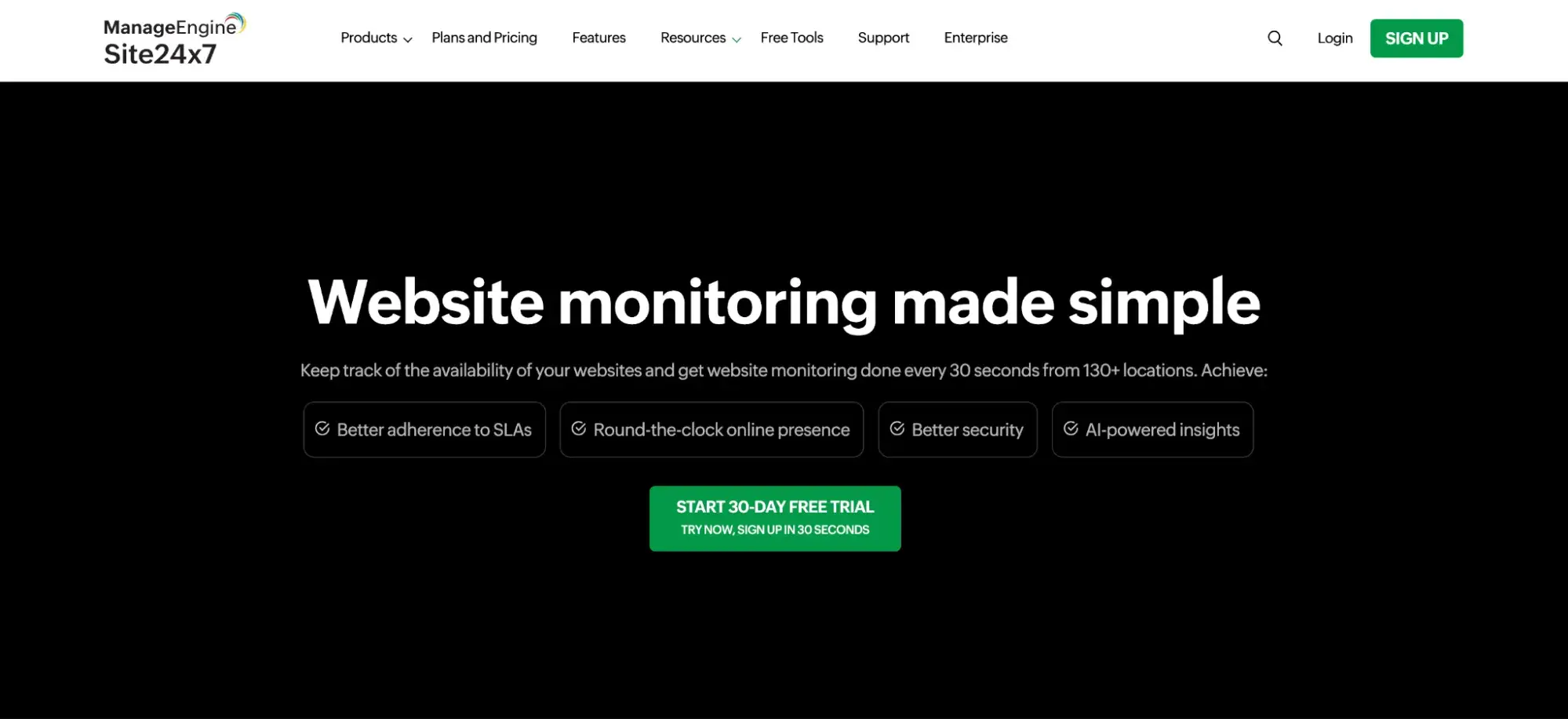
When I think of Site24x7, the first word that comes to mind is robust. The left-hand menu on the site gives me lots of options of what to monitor. Sure, I can see how my website is doing, but I also can analyze my web pages, monitor my DNS, check my SSL certificate, my FTP, my REST API … the list goes on.
If you’re a web wizard, you may love these features. You can track every you’d want to monitor all in one place. However, as a solo business owner, I can find all of this information overwhelming.
I find Site24x7 to be a great option for folks running a large team or with a department that works on the website. They’ll not only love how much data there is but also understand what to do with it.
Core features include:
- Ease of use. Site24x7 is straightforward to set up and use, with a user-friendly dashboard that provides granular visibility into website uptime.
- Integrations with other business-critical tools like Slack, PagerDuty, and Freshservice enable businesses to automate workflows.
- Multilocation website monitoring that tests website uptime and performance from over 90 locations worldwide.
What I like: I like how I can customize my dashboards to focus on metrics that matter most to me.
7. Updown.io
Best for: Anyone in search of a speedy, budget-friendly option.
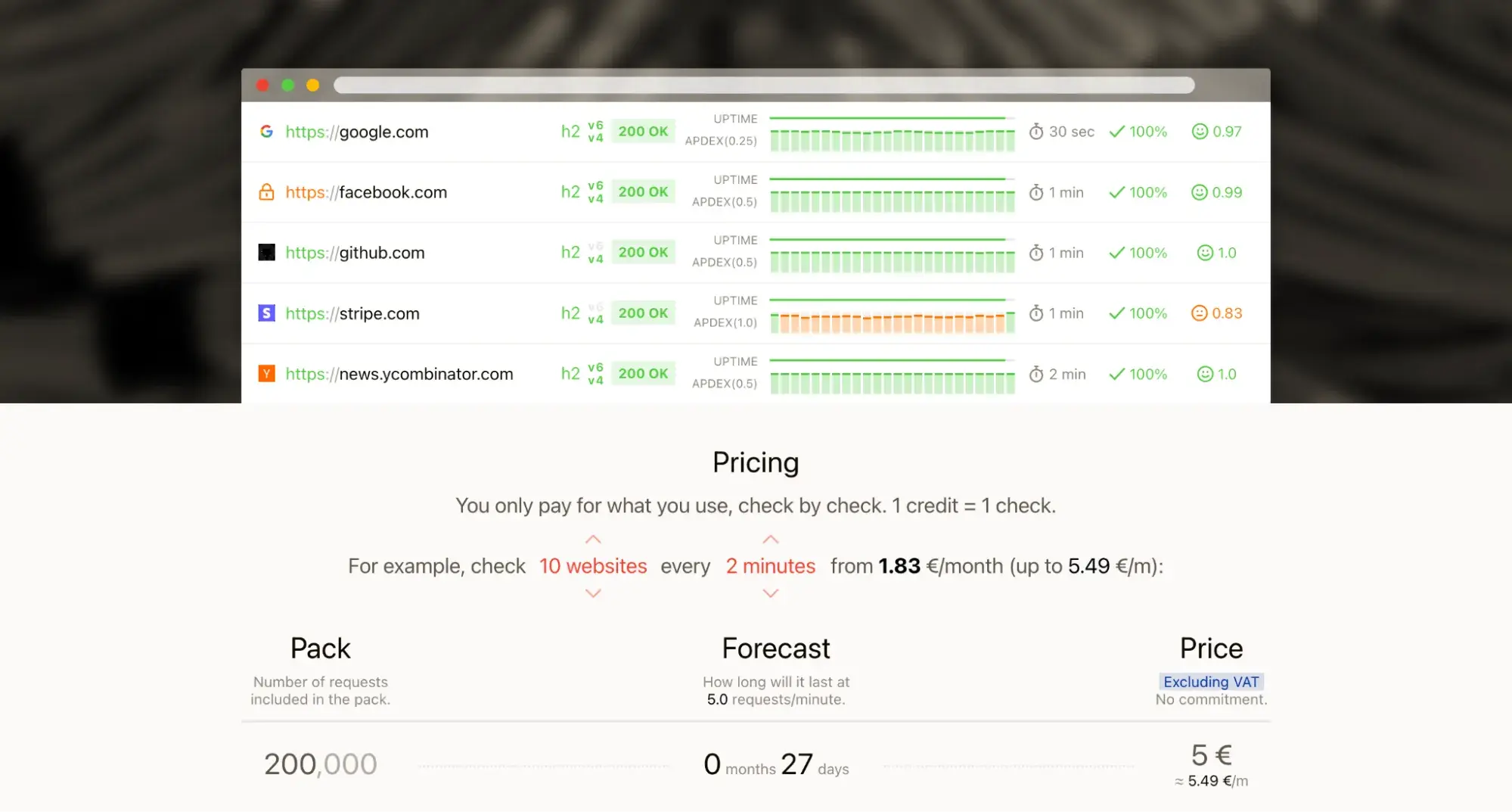
Updown.io is a lightning-fast, simple, and effective website monitoring service. Here, I can set custom check intervals and advanced altering channels. Your site’s performance issues can be sent to your phone, email, and Slack. I love the Slack option especially, because any challenges can get triaged by alerting a specific team.
Plus, Updown.io provides shared status pages, allowing businesses to put their page availability out to the public.
Core features include:
- Fast checks that typically take only a few seconds.
- Customizable intervals that allow you to control how often your website is checked.
What I like: I like the flexible pricing that Updown.io offers. Instead of paying a fixed subscription, I can pay for only what I use (the requests I make).
8. HetrixTools
Best for: Businesses looking to monitor both uptimes and security threats.
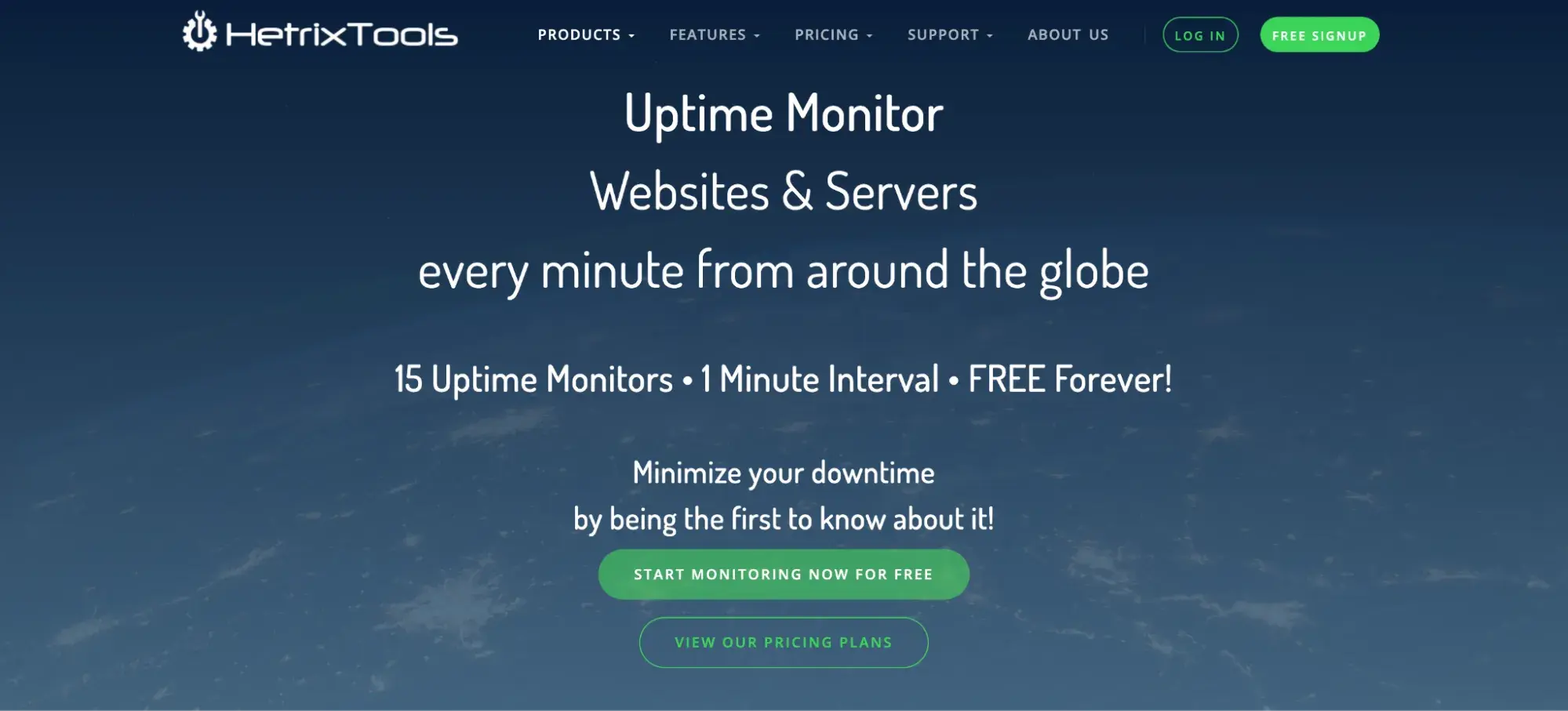
HetrixTools is an all-in-one server and website monitoring tool. It can check your site is live and identify bad actors that can affect your performance. Additionally, it can help analyze website DNS settings, scan websites for malware, and check disallowed IP addresses.
I found setting up a free monitor easy. I put in my website, then clicked on the URL. From there, I could see the uptime and how long it takes for the site to load. I could also track the site from four locations — New York, Dallas, London, and SF.
I love that HetrixTools checks the uptime every minute (more free sites take five minutes). However, I wish I could see how my site performed from a wider range of locations.
Core features include:
- Reputation monitoring, which provides insight into your website IP address's reputation
- DNS health checks that ensure that servers are always available and delivering fast response times.
- Malware scanning that ensures your websites are secure and free from threats.
What we like: HextrixTools’ free plan allows me to monitor up to 15 servers in four locations with one-minute checks. The tool lets me know how my websites are fairing without any upfront cost.
9. Better Stack
Best for: Online companies, E-commerce, SAAS, and service-based businesses that rely heavily on their websites' availability for revenue and growth

Better Stack is a website monitoring service that aims to make it easier for businesses to monitor their websites, servers, and APIs. Better Stack presents detailed reports and analytics that help businesses analyze performance data and identify trends.
When I tested Better Stack, I found the set up incredibly easy. The website guided me through the process every step of the way. I just chose what I wanted to do (monitor update), what systems I wanted to integrate (like Slack), and then added my website and my phone number. I then got a test alert phone call, so I knew what an alert would look like in the real world.
I love that you can set up an on-call person in the system as well. That means you can delegate a team to respond to outages based on their working hours.
Core features include:
- An intuitive dashboard where businesses can proactively identify, troubleshoot, and manage incidents in real time.
- Automatic incident detection that alerts businesses of potential issues before end-users are impacted.
- Collaborative tools that enable integration with chat tools like Slack, Microsoft Teams, and more.
What I like: Better Stack is easy to set up and customize. The free tier also offers me a lot of value at zero cost.
10. Apica
Best for: Businesses of any size that rely on web applications, mobile applications, and API services.
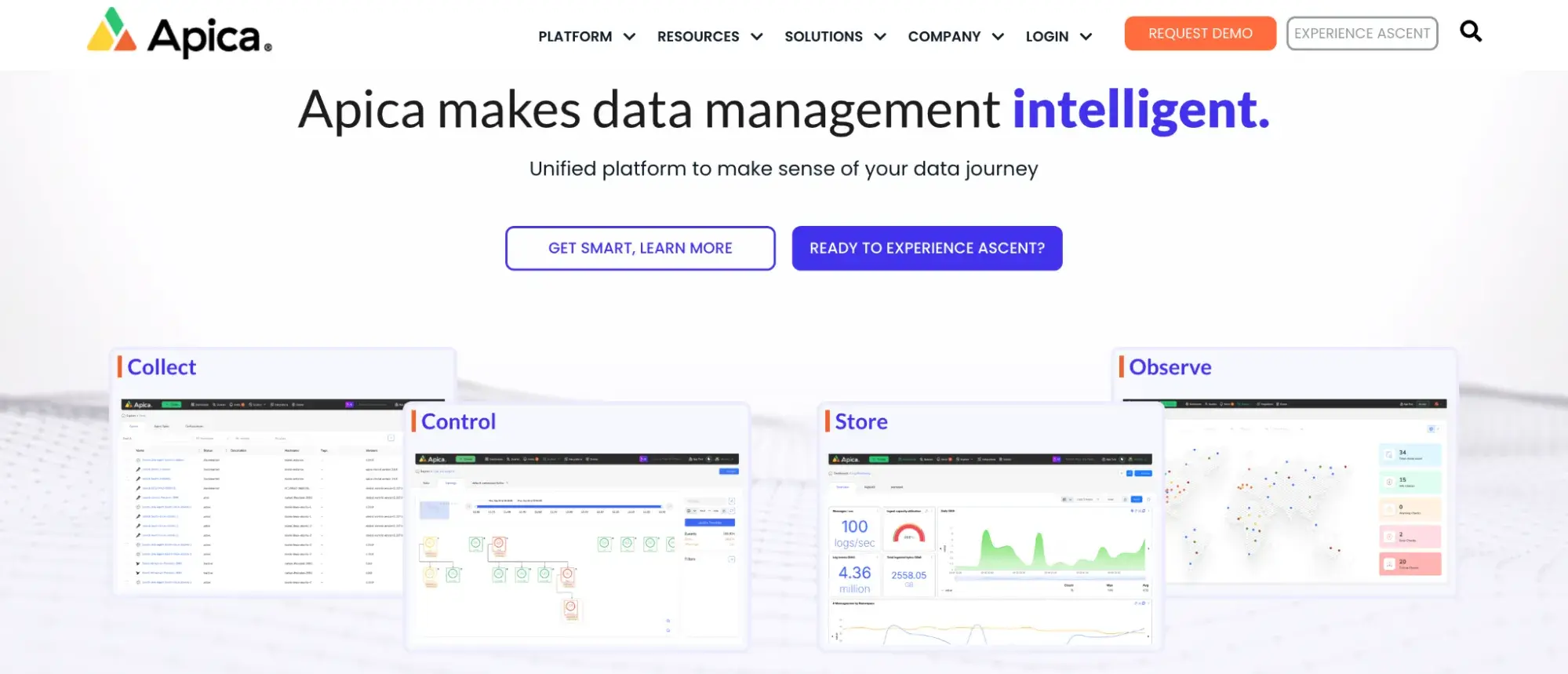
Apica provides comprehensive load testing and performance monitoring solutions. The platform is designed to help businesses optimize website and mobile performance by identifying bottlenecks.
The team at Apica regularly updates the tool and releases new features to ensure customers enjoy the best service. However, these frequent updates also mean extra time spent learning how to use these new features. That can be tough if you run a small operation like me.
Core features include:
- Multi-check that enables users to monitor multiple website checkpoints to ensure an accurate view of website performance.
- Diagnostic Data, including error messages and response times.
What I like: Apica can handle large-scale environments. This means I can rely on Apica even as my infrastructure and business grows.
11. Datadog
Best for: Mid to Enterprise organizations that rely on cloud environments and need real-time observability of their technology stack.
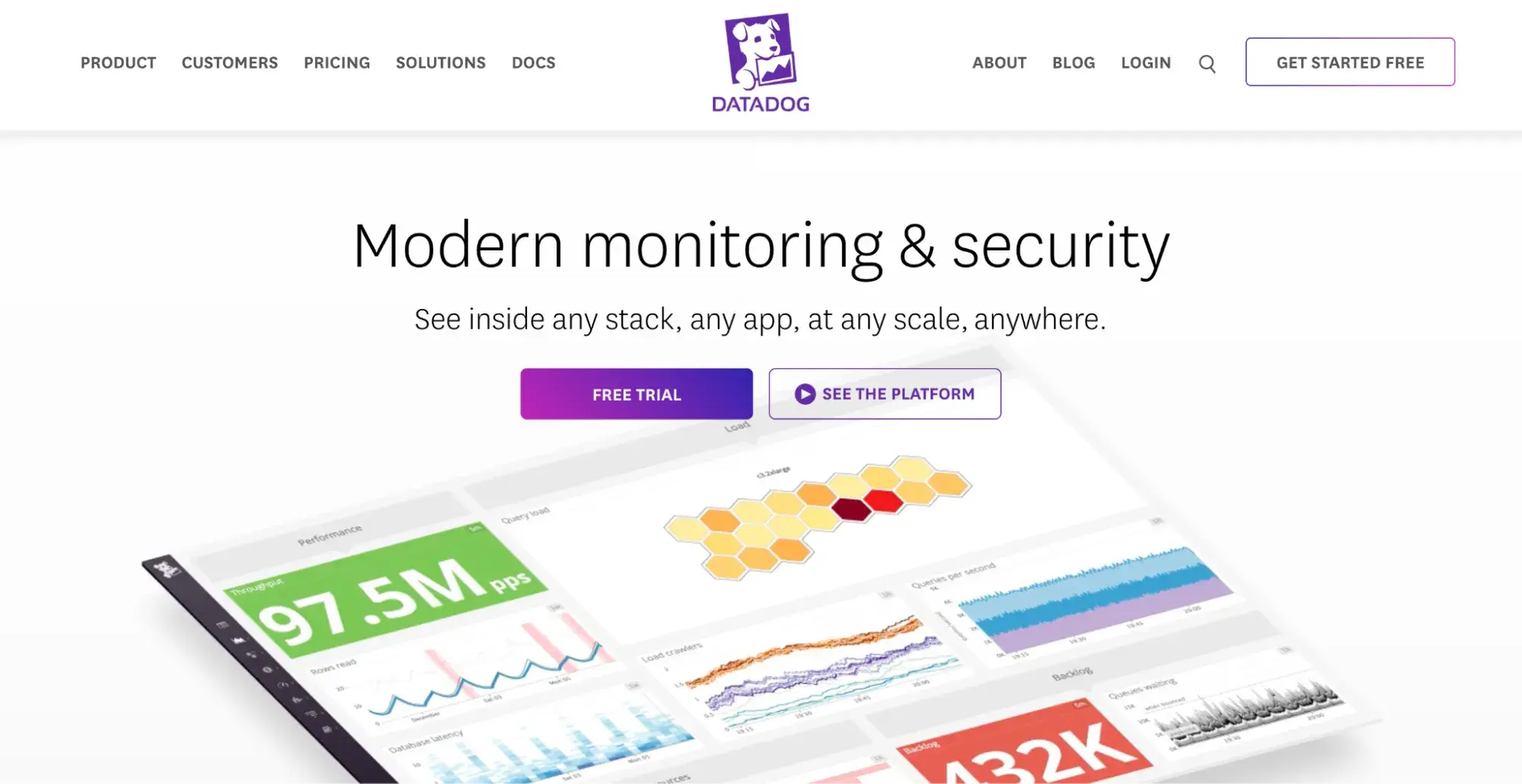
Datadog is a powerful monitoring platform that helps businesses manage complex cloud infrastructures. With Datadog, developers and IT operation teams gain visibility into their services, applications, and websites to quickly identify and resolve issues before they affect users.
Datadog integrates with over 800 systems, apps, and services, making it easy for teams to automate workflow and use tech stacks they’re familiar with. While I don’t need that robust level of integrations, I know that’s a great option for large organizations.
Core features include:
- Real-time insights into server health and cloud environments.
- Detailed traces of application requests, helping teams pinpoint performance bottlenecks
- Customizable dashboards and intelligent alerting to visualize data and stay ahead of potential problems.
What I like: Datadog’s integration with over 800 tools is a game-changer. No matter which tools I already use, I can be almost certain that Datadog works seamlessly with them.
12. LogicMonitor
Best for: Diverse teams in medium to large enterprises needing automated monitoring solutions.
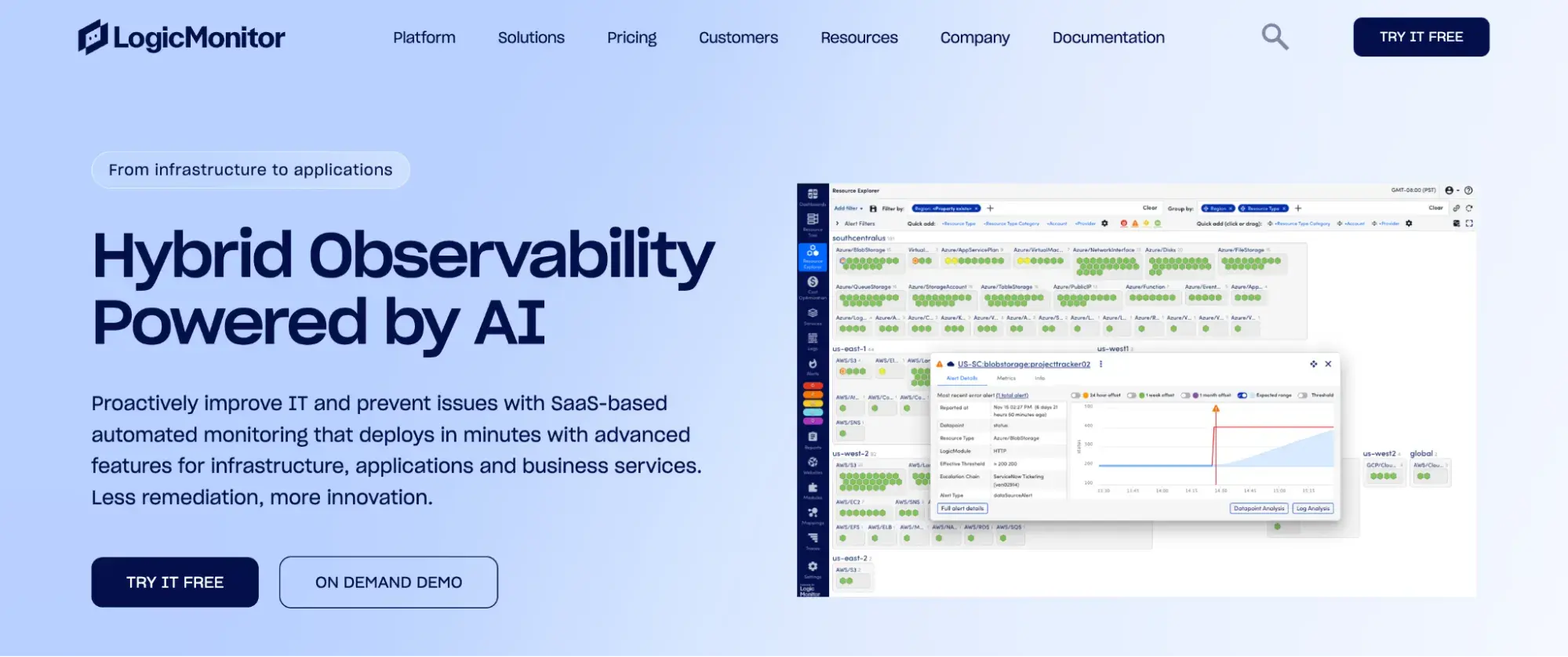
LogicMonitor is a monitoring platform powered by Artificial Intelligence (AI). It monitors networks, servers, and applications so you can maintain high performance and uptime. This is another tool best suited for those who are interested in robust reporting (read as, access to lots of information).
If your goal is proactive, IT management beyond just a website, this is a great option. I like that you can choose which dashboards should be public to your organization and which should be private just for you. You’ll also have the choice to design your dashboard, choosing the widgets you want to appear.
Core features include:
- Over 3000 integrations with core tools like Azure, Slack, and Kubernetes.
- Customizable dashboards that provide insights at a glance.
- Machine learning and AI to help you flag unusual patterns and predict likely outcomes.
What I like: I like LogicMonitor’s flexibility. I can customize and build custom modules depending on my needs — whether business or personal.
13. MonSpark
Best for: Small business owners and freelancers looking for a reliable and affordable monitoring tool.
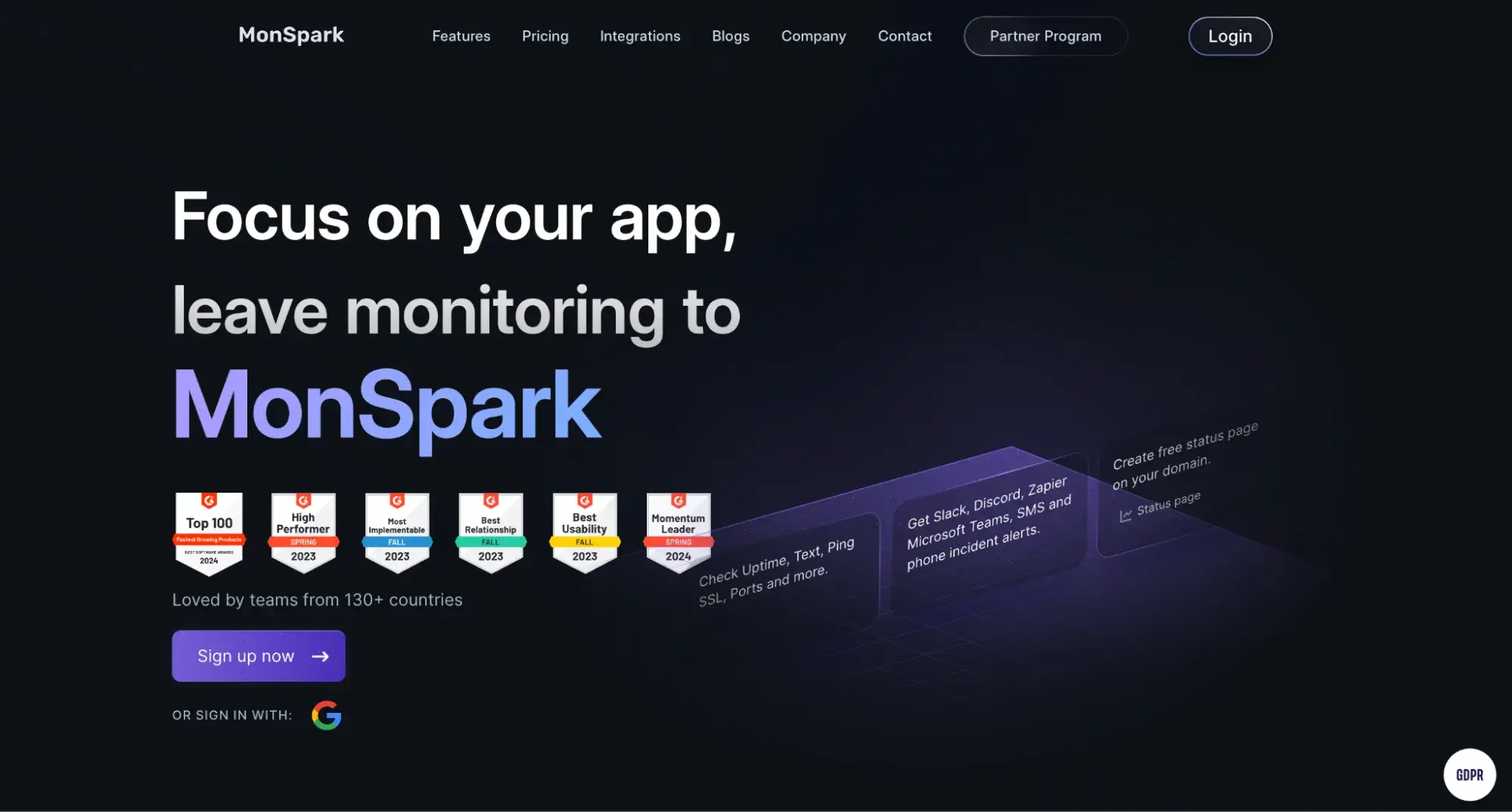
MonSpark is a simple and effective website and server monitoring tool. It tracks uptime, website content changes, and performance, making it an excellent choice for small businesses with a lot on their plates.
Beyond just uptime monitoring, MonSpark can perform a Lighthouse Audit to let you know if your site speed has changed. My favorite part is that you can buy a lifetime subscription to the service, a dwindling offering in a subscription-based world.
Core features include:
- Real-time alerts to Slack or email whenever your websites or servers are down.
- Screenshot or on-page content monitoring that alerts you when your website content changes.
- Domain monitoring ensures you have enough notice before your domain expires.
What I like: MonSpark covers most of your monitoring needs, from uptime to SSL to SEO. I also like how intuitive the platform’s user interface is.
How to Choose the Best Website Monitoring Tools for Your Business
You’ve just seen twelve website monitoring tools you can use for your business. However, I understand that analysis paralysis can occur, and you may be asking yourself, how do I choose the right tool for my business?
Here are some key factors I recommend you should consider before making a decision:
Determine your business needs.
Identify the type of monitoring your business needs. Is it uptime? General? Security? Performance? Or something else?
Usually, your business needs are tied to the goals you’re trying to achieve. For instance, if your goal is to maintain customer trust and satisfaction and reduce system downtime, choosing a tool that prioritizes uptime monitoring sounds like the best choice.
You likely won’t make the most of a tool that offers synthetic monitoring when all you need is uptime monitoring. A clear understanding of your needs will eliminate some of the tools on this list.
Assess the features and integrations.
With your goals in mind, look for tools with features and integrations to help you achieve them. These tools have basic features like uptime monitoring, performance metrics, customizable alerts, and dashboards.
If your needs and goals exceed the basic features, look for tools with advanced features. These advanced features include global monitoring locations, SSL certificate monitoring, code-level monitoring, etc.
Another helpful tip: Compare your current tech stack and the monitoring tool's integrations. You want your monitoring to work with what you already use.
Consider ease of use and setup.
You already have a lot going on, so choosing a tool with a steep learning curve would be unproductive — especially if you lack technical expertise. Look for a tool that is easy to set up and use. It should have an intuitive user interface and customizable dashboards to visualize your data quickly.
Evaluate customer support.
Sometimes, you may need to contact customer care to resolve specific issues. How well does the tool’s team respond? You can check review sites to see what other customers say about support and performance. I’d stay clear of tools with generally negative reviews, even if they meet my other needs.
Check the price.
While some of these monitoring tools have a free plan, your needs might require a paid subscription. So, consider your budget, too. I like to think of the highest reasonable amount a subscription could cost and compare it to my budget. I then choose a tool that can scale with me as my business grows.
Getting Started with Uptime Monitoring
Just as you wouldn’t wait to fall sick before visiting the doctor, you shouldn’t wait till your website is down before doing something. You can start by choosing and using a website monitoring tool today. Doing so will help you avoid potential revenue loss and maintain your customers’ trust.
Editor's note: This post was originally published in June 2023 and has been updated for comprehensiveness.
Website Performance


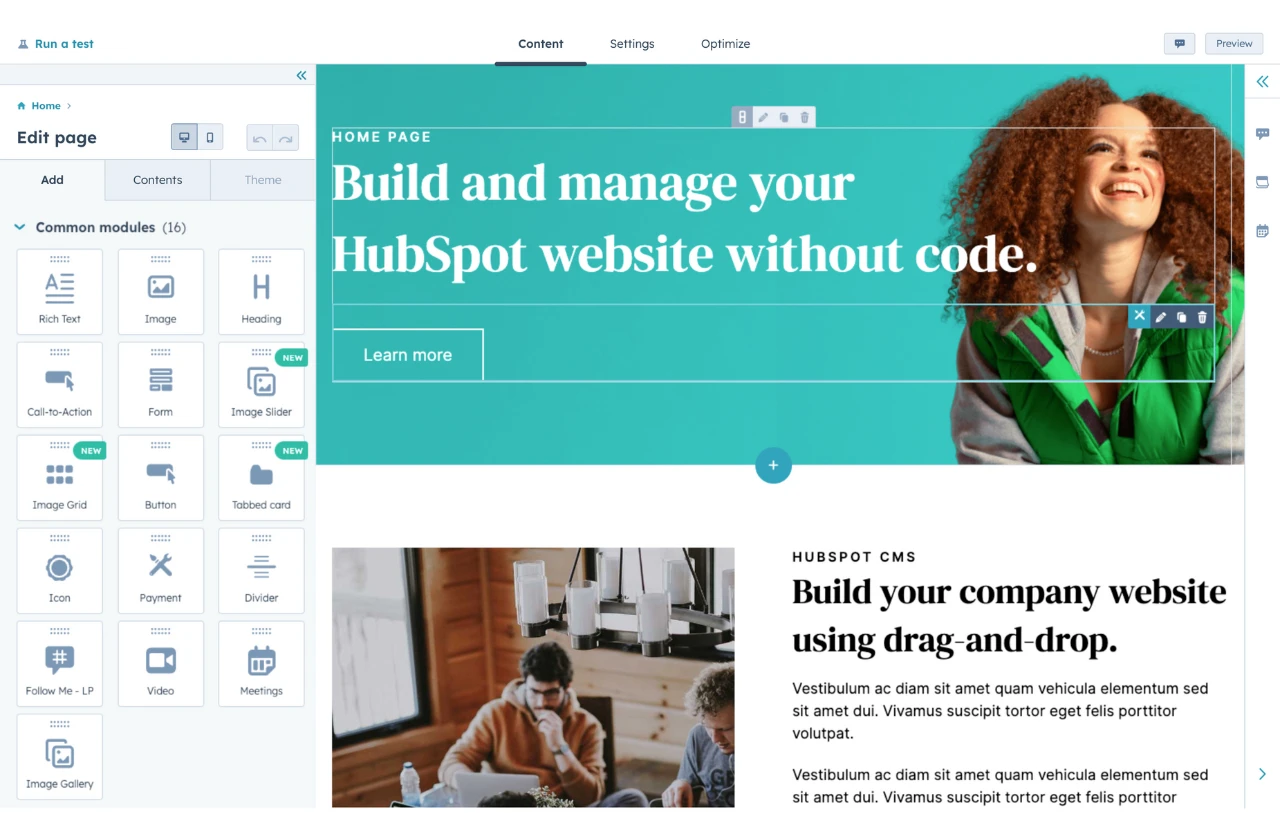


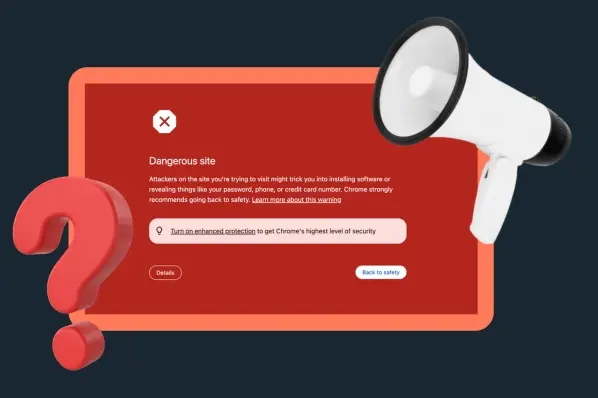


![7 Site Performance Challenges That Will Hold Businesses Back [Data + Expert Predictions]](https://53.fs1.hubspotusercontent-na1.net/hubfs/53/how-to-improve-lcp-1-20250121-126295.webp)


![19 Website Speed Optimization Strategies for 2024 [New Data]](https://53.fs1.hubspotusercontent-na1.net/hubfs/53/how-to-optimize-website-speed-1-20241203-1468927.webp)
